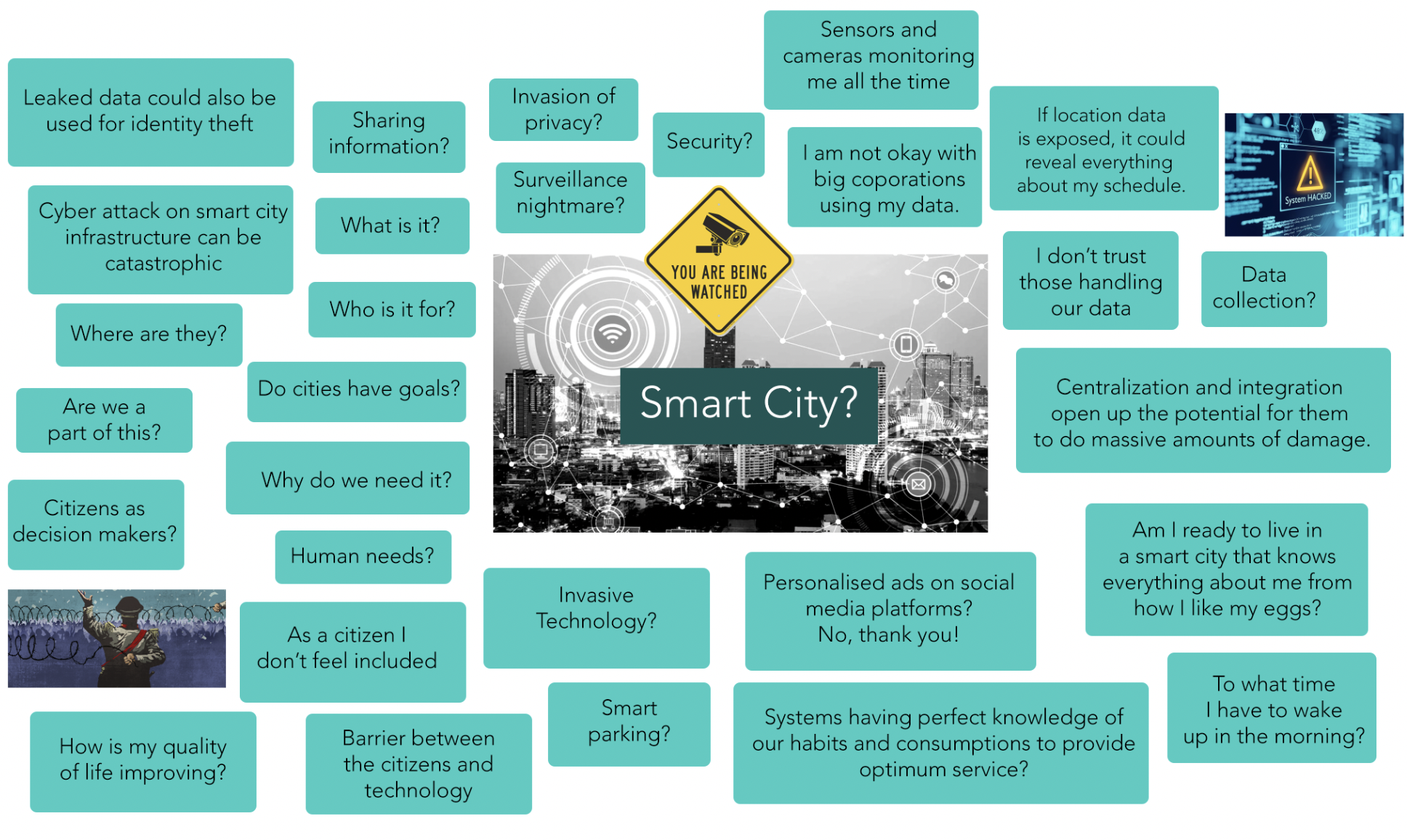#09 Taking a Step Back
After our mid-term crit with Alex and the rest of the class, we found ourselves in a difficult position. After hearing the feedback we received from everyone to came to an understanding that not a lot of people like interacting with others on trains and also that we are trying to think too quickly about the design or a solution to our problem. To be honest, we were unsure of what to do next after hearing this. So we decided to take a few days off to cool down and think about the project separately. During this time I kept going back to the question of what are we trying to achieve through this or rather what are we trying to motivate through this? And since I don't agree with current idea of the smart city, what do I imagine it be like then? During this time I did a lot of research into smart city again and came across a video by Adam Greenfield which talked about the dangers of smart cities. He talked about how IBM describes their urban initiative as technology that synchronises and analyses efforts amongst 'sectors and agencies' as they happen.. so not amongst us as people or citizens but amongst sectors and agencies. Information and data is being gathered solely for the use of the decision makers for determining the shape of urban life and we human or citizens have no say in it. Umm.. good bye, democracy? I feel like all this time I wanted to say this through my process but was having difficulties trying to figure that out.
By taking a step back we started to look at our original thought process for getting into the realm of transportation and to remind ourselves of those times when there was social interaction - it was often subtle. As a team we reflected upon our process and came to the conclusion that we had rushed into defining and addressing a problem. We were hooked upon this idea that as people look sad, upset, bored and grumpy while on public transport that a way to up-lift their spirts was to encourage social interaction and ultimately improve mental well-being this way. But is this the only way to do so? Some people may wish to engage with someone else while on public transport, but the majority do not and we don’t want to force anyone into doing anything. We then as a team asked ourselves; would we like to talk to another stranger on public transport? Would we engage with another human being? On some occasions we would but the majority of the time we would not. We would want to be left alone. Following the design critique, we asked ourselves the following questions:
- Do people truly want to engage with others while on public transport?
- What about those who do not wish to engage on public transport?
- What are we trying to achieve?
- Is it just about encouraging interaction between people to support mental well-being?
- What is our end goal?
So when we all met the next week I proposed the idea of using the “worst idea possible” design thinking approach to help us think of the next steps. This creative exercise was important to have our brain cells working and break the monotony. We also felt that we had restricted our design space because we just focused on social interaction within public transport and not within the smart city as a whole. So we decided to move away from the problem and tried to focus on why we are doing this in the first place. What vision are we trying to achieve? I realized that encouraging interaction on public transport is not the way to go forward because we were limiting ourselves. At the end of the day I imagine the smart city to be a place where we’re being responsible citizens by taking care of each other and realizing that community connectedness is extremely important if we want to improve people's mental wellbeing - want to promote connectedness in a city to create a more positive society. So as a group this exercise gave us direction towards our next steps and helped us produce multiple ideas that we presented in our final crit.
I created a board to gather information around smart city and some questions that I had for myself

words: 715
Post a comment